425+ Michigan Ross MBAs Learn Valuable Lessons in Teamwork Through Art

Earlier this semester, 425+ Michigan Ross full-time MBAs got their hands dirty — literally. Paint, feathers, and glitter were on hand during the Big Picture, an exercise led by faculty members Lindy Greer, Sue Ashford, and Dave Mayer.
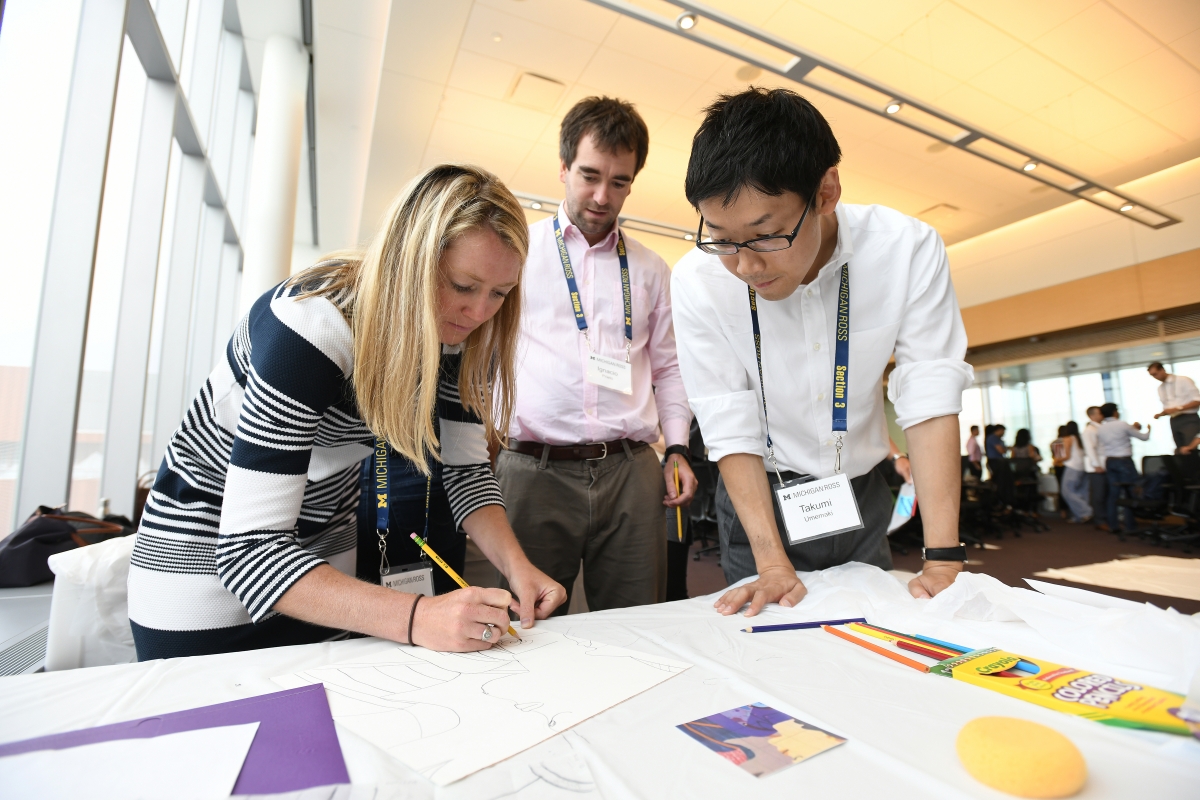 The Big Picture exercise is designed to creatively highlight conflict and communication gaps that can occur in teams placed in high-pressure situations. Here’s how it works: students are divided into large teams that act as startup companies in the business of painting murals. They receive the unfortunate news that their design for a key client was ruined in the mail, and they must recreate the painting based on scarce information in a limited amount of time.
The Big Picture exercise is designed to creatively highlight conflict and communication gaps that can occur in teams placed in high-pressure situations. Here’s how it works: students are divided into large teams that act as startup companies in the business of painting murals. They receive the unfortunate news that their design for a key client was ruined in the mail, and they must recreate the painting based on scarce information in a limited amount of time.
To complicate matters, the students are organized into a hierarchy where a few senior managers hold the most information, general workers know close to nothing but own central tasks, and middle managers must liaise between the two groups.
At the end of the experience, students not only delivered murals to the client but learned some valuable lessons in leadership and teamwork along the way. We debriefed with a few MBAs from the Class of 2021 to hear about the experience: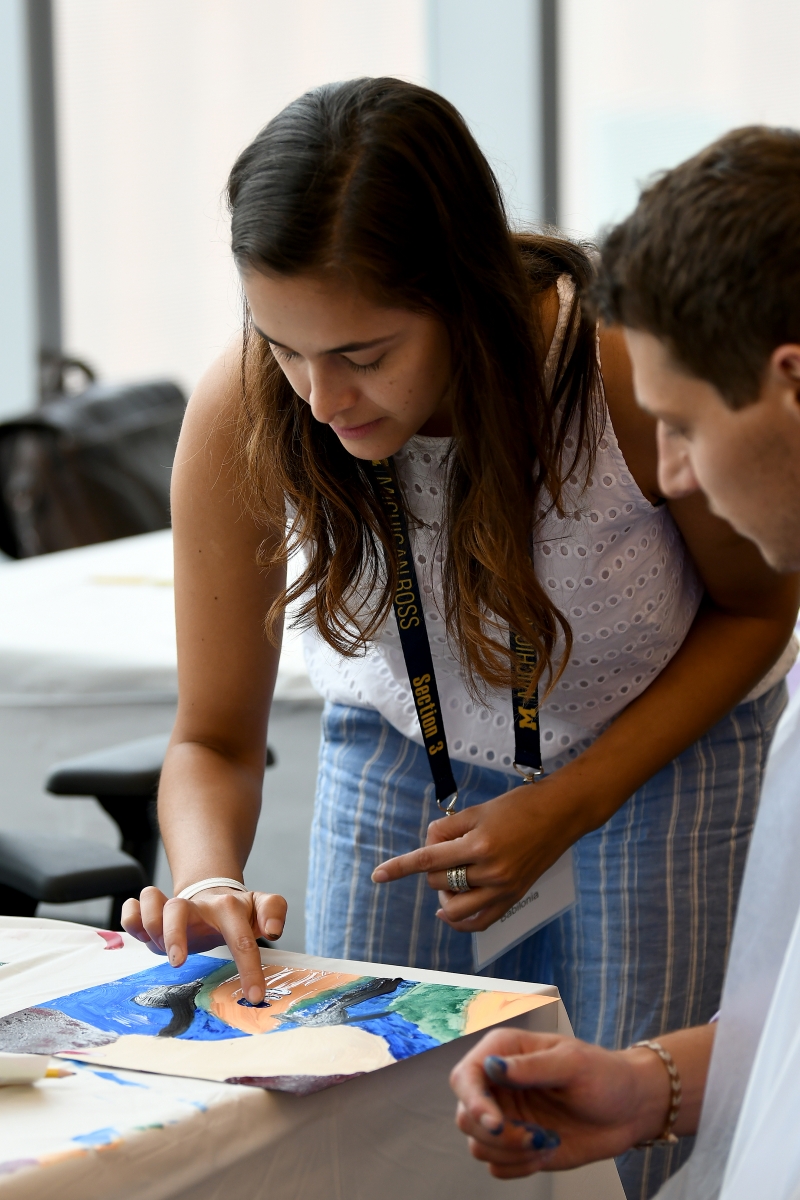
How did you feel when the exercise kicked off? … and then how did you feel when it was over?
Ozan Erdem: Right after the kick-off, I panicked because I didn’t even understand what the final deliverable will be and my assigned responsibility was to make 80+ people get this done within 10+ different groups and the clock was ticking. We didn’t even know each other's name and it seems impossible to make this happen. When we started to gather little pieces together and connect them to each other, I couldn’t believe what I was looking at… We made it! The big picture was there.
Ashruth Easwar: I felt stressed and uncomfortable. Stressed because our time limit started as soon as we were informed of our positions and task, and uncomfortable because we were just chosen to lead our section through a memorable activity without having done anything to earn said leadership role. But as the activity progressed, it became apparent that the titles were just titles, and empowering leadership within the section was the best way to succeed. After our intermission full of thoughtful discussion, we returned with a revamped strategy and energy, finishing the project with smiles all around!
What situations surfaced during the Big Picture exercise that you’ve experienced yourself in organizations and teams?
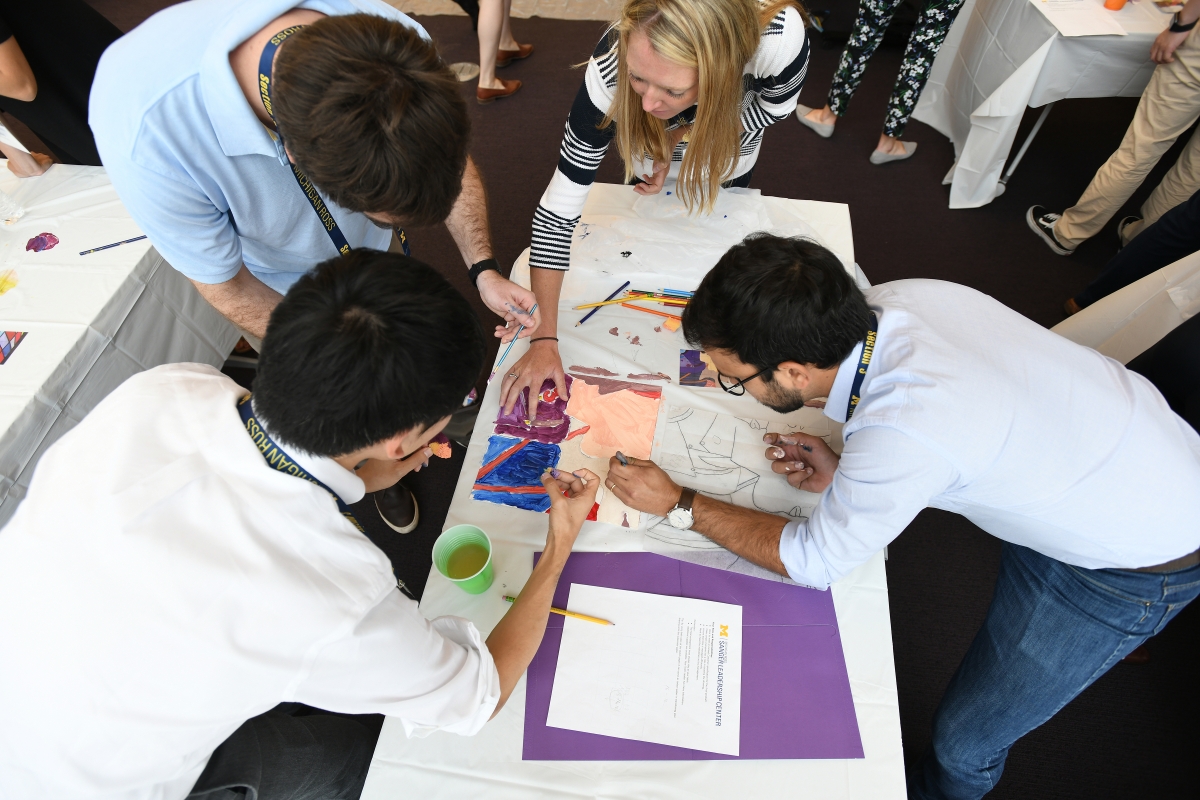 Thomya Goode: During the exercise, I experienced many of the same communication failures I’ve seen happen in the workplace. Keeping large cross-functional teams focused on one big picture is hard and it’s usually because the vision from the top isn’t being accurately disseminated to the teams.
Thomya Goode: During the exercise, I experienced many of the same communication failures I’ve seen happen in the workplace. Keeping large cross-functional teams focused on one big picture is hard and it’s usually because the vision from the top isn’t being accurately disseminated to the teams.
Can you describe a particularly memorable moment during Big Picture?
Sarthak Sahney: The final aha moment when the entire mural came together was very powerful showing us how despite not having seen the other team’s work we were able to create something which we could all claim joint ownership for.
What is one surprising insight you learned about yourself during Big Picture?
Tori Chang: The exercise validated that I tend to be hard on my managers - expecting them to have all the answers. Even in an exercise like this, where our titles were constructs for the sake of a learning exercise, I found myself feeling frustration when the leaders provided conflicting direction. I learned that managers often share the same feelings as their workers and that I should exercise patience as we figure out a process as a team. 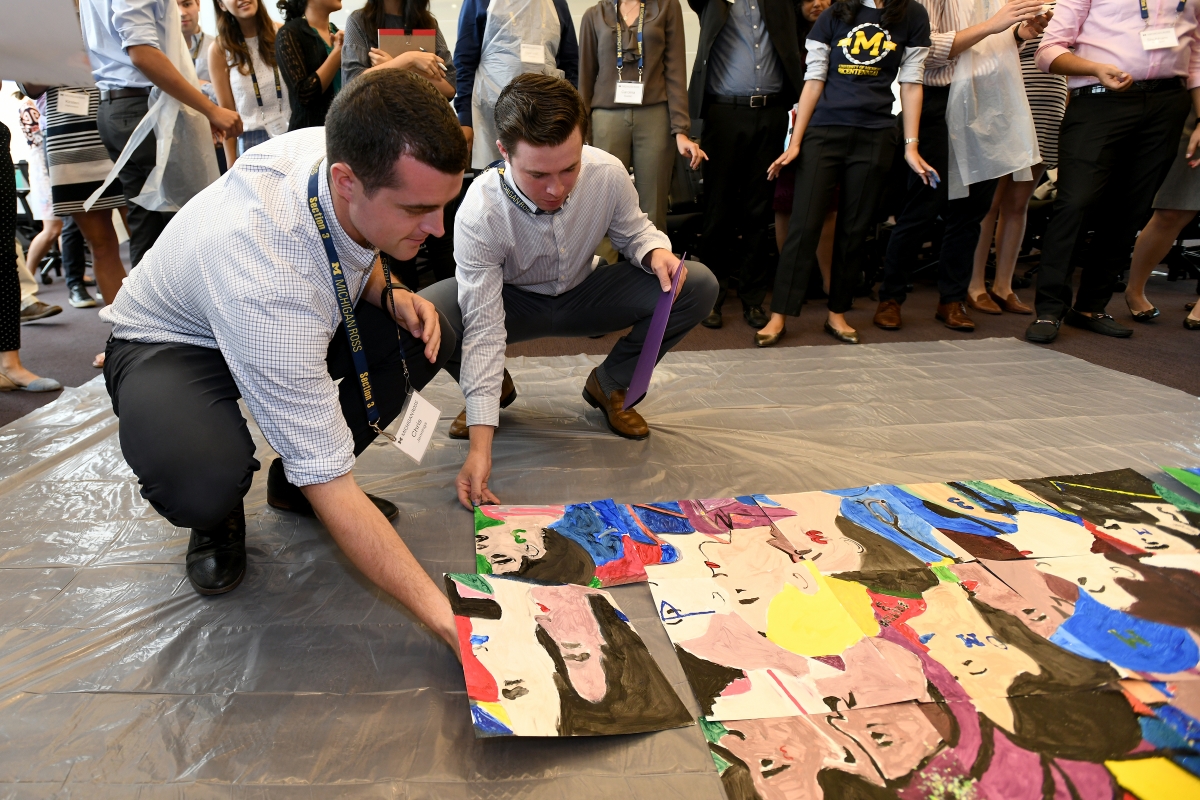
What specific insights did you gain that you will apply to future team situations?
Michael McMenamin: I feel most comfortable leading when I have the opportunity to establish expertise and credibility, but in business, a leader must often guide others when there is ambiguity. Going forward, my goal is to take initiative despite uncertainty and lead others through collaboration.
Gyanesh Mishra: When working at the lower levels of hierarchy, it is easy to feel like a cog in the wheel. However, such a mindset cultivates apathy to strategic objectives and overlooks flaws in execution. The ownership mindset is essential for each employee, irrespective of their position and role, to ensure continuous improvement and innovation.
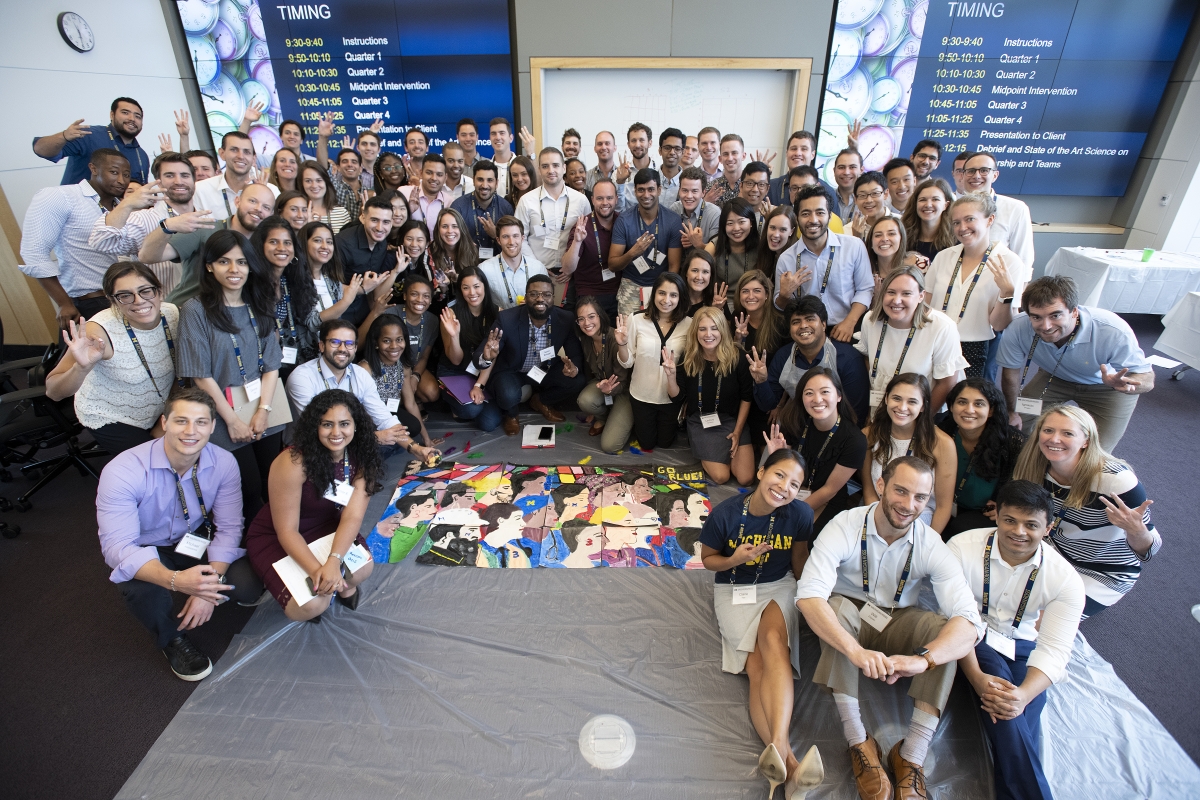
Learn more about the Sanger Leadership Center







